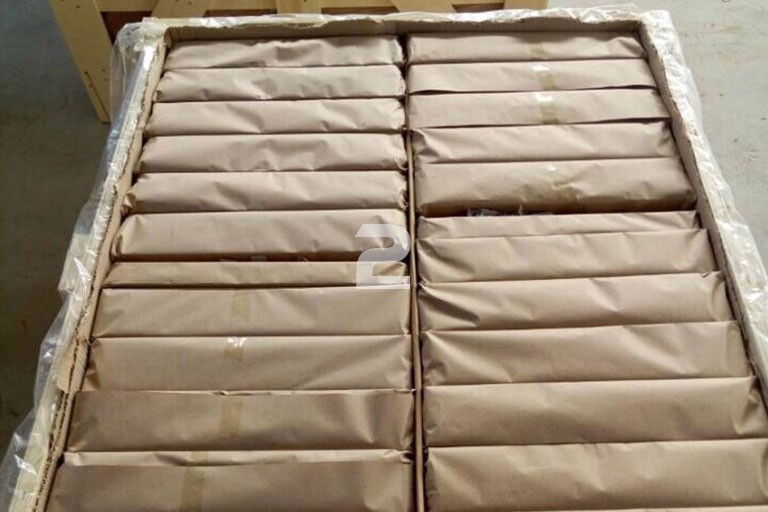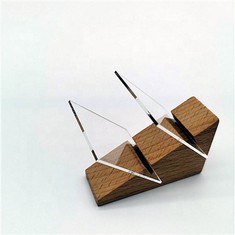Description
Technical Parameters
description
Anti-Glare Glass, also known as non-reflective glass or anti-reflective (AR) glass, is a type of glass that has been specially treated or coated to reduce reflections and minimize glare from ambient light sources. It works by altering the way light interacts with the glass surface, making it less reflective and allowing for improved visibility through the glass.
The primary purpose of Anti-Glare Glass is to enhance the viewing experience by reducing reflections and glare, which can be especially beneficial for displays, artwork, photographs, and other applications where clarity and visibility are crucial. It is commonly used in electronic displays (such as computer monitors, TVs, and smartphones), picture frames, museum exhibits, retail displays, and various forms of artwork to provide a clear and unobstructed view of the content.
Product Parameter((specification)
|
Part |
Data |
|
Gloss |
40-120 |
|
Haze |
3-20 |
|
Roughness |
0.06-0.34 |
|
Transmittance |
40-92% |
|
Abrasion |
>2500 Cycle |
| Parameter | Specification |
|---|---|
| Glass Type | Soda-lime glass or low-iron glass (customizable) |
| Thickness | Customizable (typically 1mm to 6mm or more) |
| Size | Customizable (common sizes: 24"x36", 48"x72", etc.) |
| Anti-Glare Coating | Type and degree of glare reduction specified |
| Light Transmission | Percentage of light passing through the glass |
| Haze | Haze value indicating glass clarity |
| Reflection Reduction | Percentage reduction in reflections and glare |
| Surface Hardness | Hardness level affecting scratch resistance |
| Durability | Resistance to scratches, abrasion, and chemicals |
| Cleaning Instructions | Maintenance guidelines for preserving properties |
| Customization Options | Availability of size, thickness, etc. customization |
| Applications | Suggested use cases for Anti-Glare Glass |
Product Feature


Reduced Glare: Anti-Glare Glass significantly reduces reflections and glare caused by ambient light sources, such as sunlight or artificial lighting. This improves visibility and readability, especially in bright environments.
Enhanced Viewing Experience: It provides a clear and unobstructed view of the content displayed behind the glass, making it ideal for displays, screens, artwork, and other applications where visual clarity is essential.
Improved Contrast: Anti-Glare Glass can enhance the contrast of displayed content by reducing the scattering of light, resulting in sharper and more vibrant images.
Minimized Fingerprint Marks: Some anti-glare coatings also have anti-fingerprint properties, which reduce smudges and make the glass easier to clean.
Reduced Eye Strain: By minimizing glare and reflections, Anti-Glare Glass can help reduce eye strain and discomfort, making it more comfortable for extended viewing.
UV Protection: Some Anti-Glare Glass solutions offer UV-blocking properties, helping to protect sensitive materials, such as artwork or documents, from the harmful effects of ultraviolet (UV) radiation.
Aesthetic Appeal: Anti-Glare Glass maintains the aesthetics of the displayed content without distracting reflections, making it suitable for applications where design and aesthetics are important.
Versatility: It can be customized in terms of size and shape to suit various applications, including electronic displays, picture frames, museum exhibits, retail displays, and more.
Durable: Anti-Glare Glass is typically durable and scratch-resistant, ensuring a long lifespan, even in high-traffic areas.
Easy Maintenance: It is relatively easy to clean and maintain, thanks to its anti-fingerprint and anti-static properties.
Privacy: In some cases, Anti-Glare Glass can also provide a degree of privacy by reducing the visibility of the screen's content from certain angles.
Overall, Anti-Glare Glass enhances the user experience by improving visibility, reducing distractions, and preserving the quality of displayed content in a wide range of applications.
Application
Usage scenarios include outdoor electronic devises and display application under bright lighting. A few examples include billboards, ATMs, POS cash registers, medical B-displays, e-book readers, and ticket vending devices for public transportation.
Working Environment Overview





Edge Treatment

Factory Overview & Customer Visit

Company Profile

Customer Visit
FAQ
1. How does Anti-Glare Glass work?
Anti-Glare Glass typically works by diffusing or scattering incoming light, which reduces the intensity of reflections and glare. This makes it easier to view the contents of a display or see objects through the glass.
2. Where is Anti-Glare Glass used?
Anti-Glare Glass is commonly used in various applications, including electronic displays (such as monitors, TVs, and smartphones), picture frames, museum exhibits, retail store displays, and glass-covered artwork.
3. Is Anti-Glare Glass the same as Anti-Reflective (AR) Glass?
No, they are not the same, although they serve similar purposes. Anti-Glare Glass primarily reduces glare caused by ambient light sources, while Anti-Reflective Glass reduces both surface and internal reflections for optimal transparency.
4. Can Anti-Glare Glass be customized for specific applications?
Yes, Anti-Glare Glass can be customized in terms of thickness, size, and the degree of anti-glare treatment applied, depending on the intended use.
5. Is Anti-Glare Glass scratch-resistant?
Anti-Glare Glass may have some scratch-resistant properties depending on the type of treatment or coating applied. However, it's essential to handle it with care to avoid scratching the surface.
6. Does Anti-Glare Glass affect image quality or screen clarity?
When properly applied, Anti-Glare Glass should reduce glare and reflections without significantly affecting image quality or screen clarity. However, the degree of reduction in glare may vary based on the specific anti-glare treatment used.
7. Can Anti-Glare Glass be cleaned like regular glass?
Yes, Anti-Glare Glass can typically be cleaned using standard glass cleaning methods. However, it's advisable to use a soft, lint-free cloth to avoid damaging the anti-glare coating.
8. Is Anti-Glare Glass suitable for outdoor use?
Anti-Glare Glass can be used outdoors, but its effectiveness may be limited in extremely bright sunlight. For outdoor applications, additional measures like shading may be necessary to reduce glare further.
These are some common questions and answers related to Anti-Glare Gla
Hot Tags: anti-glare glass, China anti-glare glass manufacturers, suppliers, anti glare phone, anti glare surface, tempered glass ag, anti glare mobile tempered glass, AG Glass, Anti Glare and Blue Light Blocking Glasses
Delivery & Payment




Packaging:
Step 1: PE film coating(Normally) / paper(For seashipment prevent wet).
Step 2: Kraft paper for fixation.
Step 3: Carton for glass safety protection.
Step 4: Custom make plywood case with hinge for custom(fumigation + convenient inspection) convenience.
Step 5: Packing strap for further fixation.
Port
Shenzhen or Hongkong

Previous
Custom Tempered Anti-Glare GlassSend Inquiry













